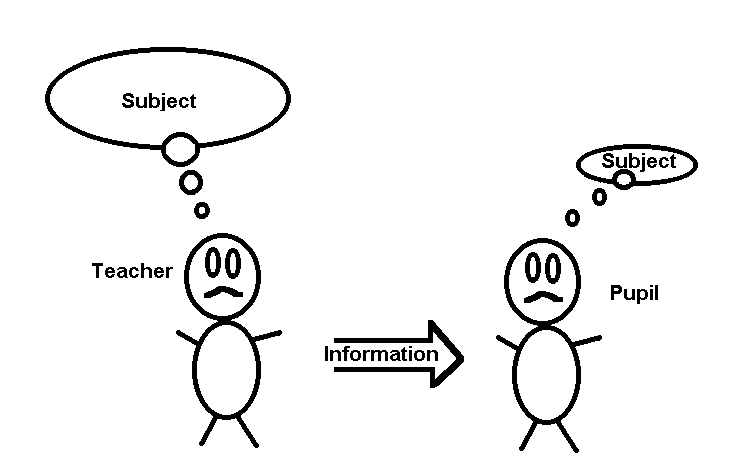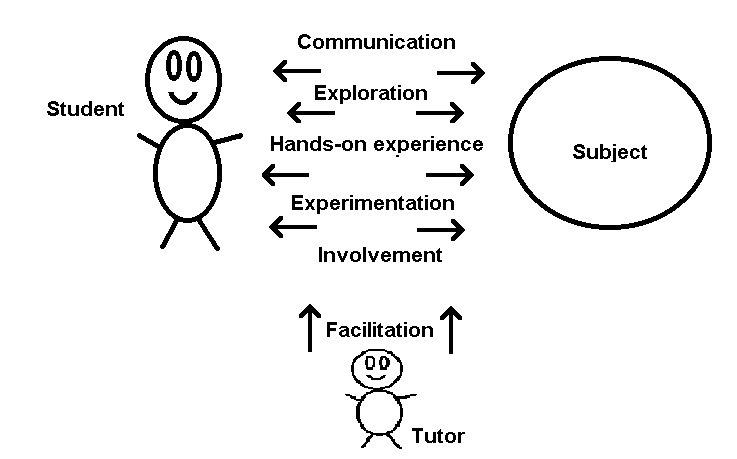[Last article] [Teaching Skills Index] [Next article]
Old model of teaching
The old traditional methods of education
often followed the authoritarian model of teaching. This looks
something like this:

- The teacher has a large knowledge
of the subject, the pupil a relatively small understanding
of it.
- The teacher takes bits of their
knowledge and transmits it across the void to the pupil.
- The pupil somehow receives these
bits of knowledge and adds them to what they already know.
- The pupil's knowledge of the subject
grows as a sort of duplicate of the teacher's knowledge
and understanding.
There are many problems with this
model:
- It works well only if the pupil
and teacher share a similar general view of the universe.
- It makes no real allowance for
the pupil's individual strengths and weaknesses.
- It doesn't allow the pupil to
engage with the subject on their own terms. This often has
the effect of alienating the subject in the eyes of the
pupil.
Up until relatively recently this
model of teaching was prevalent in mainstream education at
primary and secondary school levels throughout the UK and
I'm fairly certain that a similar model has prevailed in most
parts of the world.
I feel sure that many of you reading
this article will have memories of being taught like this.
I am equally sure that you have probably retained little of
the 'knowledge gained ' in this fashion.
New model of teaching
In the new model I rename the teacher
'tutor' and the pupil 'student'.
The new model of teaching is based
on the tutor facilitating the learning process. The
tutor does this by helping the student engage directly with
the subject on their own terms:

Why is this important? For two simple
reasons:
- A great deal more learning occurs
with the new model
- The process is far more enjoyable
for both the student and the tutor.
[Last article] [Teaching Skills Index] [Next article]
|








